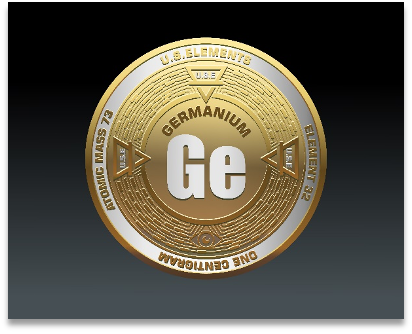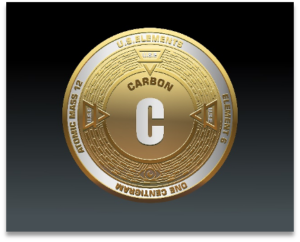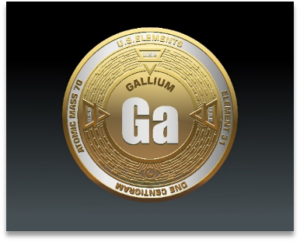When most people think of semiconductors, silicon comes to mind. However, before silicon became the dominant material in electronics, germanium was the go-to element for early transistors. Even today, germanium plays a crucial role in fiber optics, infrared optics, and solar cell technology, making it indispensable to modern industries. As the 17th mineral in our Critical Minerals Series, germanium stands out as a vital yet often overlooked resource that the United States must secure for its technological and economic future.
Why the U.S. Needs Germanium
Germanium’s properties make it essential for a range of high-tech applications:
- Fiber Optic Networks: Used in optical fibers to enable high-speed internet and telecommunications.
- Infrared Optics: Vital for night vision technology in military and security applications.
- Semiconductors: Used in high-performance transistors and integrated circuits.
- Solar Energy: Enhances the efficiency of space-based and high-efficiency terrestrial solar panels.
- Catalysis: Plays a role in polymer production and various industrial chemical processes.
With its wide array of applications, securing a stable domestic supply of germanium is crucial to maintaining U.S. leadership in defense, energy, and telecommunications.
Where It’s Found Domestically
Germanium is not mined as a primary mineral but is instead recovered as a byproduct from zinc and coal processing. In the U.S., potential sources include:
- Zinc Mining Operations: Domestic zinc refineries can extract germanium from their processing streams.
- Coal Fly Ash: Some coal deposits contain recoverable amounts of germanium.
- Recycling: Used fiber optic cables, semiconductors, and infrared optics offer secondary sources.
Economic Realities
Germanium remains a high-value mineral due to its rarity and essential applications:
- Market Price: Prices fluctuate based on demand in fiber optics and defense industries.
- Major Buyers: Telecommunications companies, defense contractors, and solar panel manufacturers.
- Global Supply Chain: China dominates global germanium production, creating a supply risk for the U.S.
Processing and Technological Innovations
Traditional extraction from zinc smelting and coal ash is costly and complex, but new advancements are improving efficiency:
- Advanced Refining: Solvent extraction and ion-exchange technologies are increasing yields.
- Recycling Methods: Improved recovery techniques from end-of-life electronics and optical components.
- Bioleaching Research: Emerging methods could allow bacteria to extract germanium from ores and waste streams.
Abundance and Waste Recovery Potential
- Crustal Abundance: ~1.5 parts per million.
- Recovery Potential: High potential for economic recovery from mine tailings and coal byproducts.
- Recycling: Growing feasibility in reprocessing electronic waste and fiber optic components.
Time to Market
Extracting germanium from ore to usable materials takes months, with refining and processing requiring additional time. However, if sourced from recycled materials, turnaround time can be significantly reduced.
Current and Future Applications
- Now: Fiber optics, military optics, semiconductors, and catalysts.
- Future: Quantum computing, advanced photonics, and next-gen solar cells.
Impact on Everyday Life
From enabling high-speed internet to improving renewable energy efficiency, germanium plays a role in daily life without most people realizing it. The increasing demand for high-performance electronics and defense technologies further cements its importance.
Consequences of Supply Shortages
A shortage of germanium would have serious ramifications, including:
- Disruptions in fiber optic communications.
- Increased costs for solar energy technology.
- Vulnerabilities in military and security optics.
- Heightened dependence on foreign suppliers, especially China.
Import Dependence
Currently, the U.S. relies heavily on imported germanium, with China being the dominant supplier. This poses a strategic risk, particularly in times of geopolitical tensions.
Conclusion: Securing America’s Germanium Supply
To reduce dependence on foreign sources, the U.S. must:
- Expand domestic recovery from zinc and coal byproducts.
- Invest in recycling initiatives for optical and semiconductor components.
- Support research into innovative extraction and processing methods.
As the 17th article in our Critical Minerals Series, germanium highlights the ongoing challenge of securing essential resources for America’s technological future. Strengthening domestic supply chains will not only bolster economic resilience but also ensure the nation’s security in an increasingly digital and interconnected world.
The road to mineral independence continues. Stay tuned for next week’s installment as we explore another critical element shaping America’s future.






